What do I mean ? Simple really. Anyone can pick up a paintbrush, open a can of paint and re-vamp an old chair, desk or sideboard. My 5 year old could do that. But would I want the results in my home? Would I be proud to think that someone might assume I had painted it? Um, no. I love her dearly, but she is 5 and does not respect form and colour in quite the same way I do.
If furniture painting is so easy why do the majority of people junk their old, often beautifully made, furniture when they no longer love it? Simply answer my quiz below for the ultimate answer please reader.
Quiz of the Day.
Can you walk into a junk shop and take one look at a run down desk with scratched and battered legs, a hole where a drawer used to be and veneer that looks like a toddler took a nail file to it and imagine it in a top end Bridal Boutique? Can you imagine it displaying veils and tiaras, its drawers full of garters and hair accessories? If you can, by which I mean it's a compulsion, you are a furniture painter. If you think I am off my rocker, you are a furniture buyer.
Disclaimer: Not all furniture painters necessarily possess the skills despite having the vision. They find this out once they try to implement the vision.
I may be waffling...I promised a mini tutorial, well here it is. Its really about working with what you have and embracing the problems.
How to work with dark stained Oak when you really don't want to break out the primer. A tutorial.
Over time I have learned a few things about painting furniture. First and foremost I love it. I get grumpy when I can't do it and I dream about it. I get excited about new items and I love every single thing I paint.
Practice helps me recognise the manner in which an item is going to behave once the paint hits it.
Annie Sloan Chalk Paint is wonderful. Autentico Paint is wonderful. They are different animals, but both claim that in using them there will be no sanding & no priming. In the main this is true. There are exceptions, and this is what I want to talk about. Dark Stained Old Oak - specifically Ercol.
With an old, dark Ercol item there will always be seepage if you are using a water based paint - Chalk or not. I can tell as soon as I see a piece that it will seep. I know I will get bleed through. Not a problem if I am working in a dark colour - there you go, Tip 1. Paint Dark oak with dark paint. But what if the items warrant a pretty pastel or creamy finish?
You can do one of 3 things.
a) Use a quality Primer, (kind of defeats the object of using such lovely paint), but if you want to go ahead - it will work, but will probably need 2 primer coats - this stuff seeps through primer too.
b) Get to work with your sandpaper / belt sander / plane.
c) Work with the seepage. Yes you heard me right. Embrace what you have. Let the furniture tell it's story. Incidentally this is the least work heavy option, but don't let that fool you, it is the best option too.
So I am going for option c) here.
Take this post war Ercol Dining Chair for instance:
 |
| Dark Oak Ercol Dining Chair |
This set was going to be trouble if I wanted a flat, clean, pristine finish. But why would I want that? The shape is lovely, they have age and they have bumps and bruises testament to their life as well loved, well used furniture. So I decided to love the seep, so to speak.
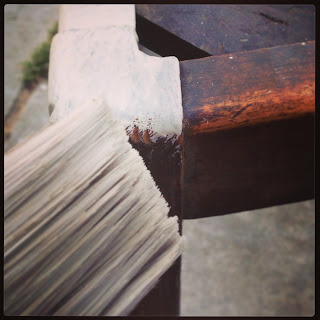 |
| Not yet seeping through |
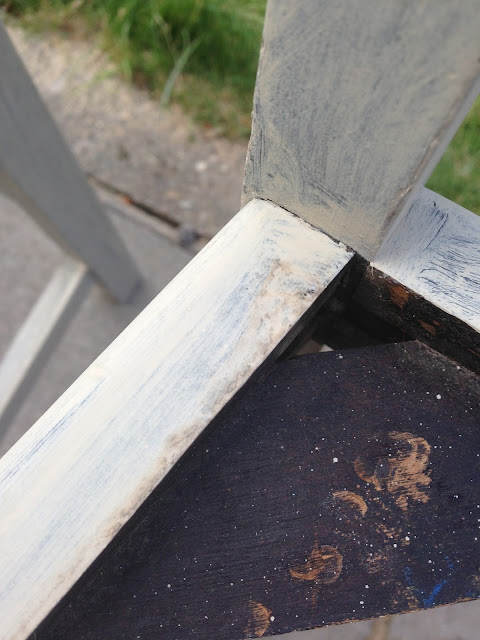 |
| Can you see the seep starting? Just one very rough coat applied. |
Apply one coat of paint very roughly. I used Annie Sloan Old Ochre. Keep the brush wet. Tickle the brush tip with a lick of water before you dip it in the paint, but don't overload the brush.
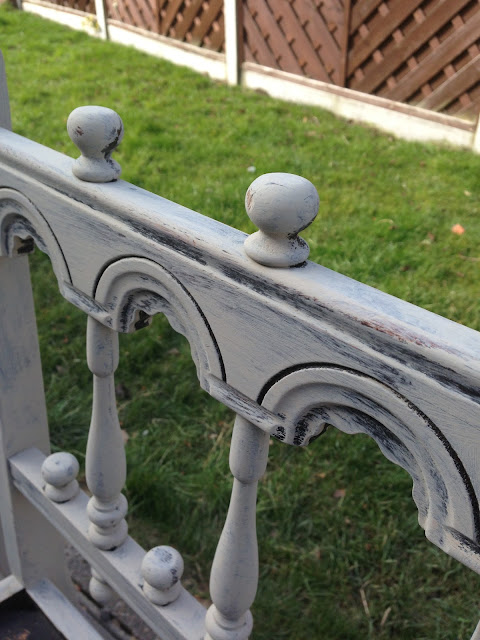 |
| Paint roughly with a wet brush. |
And paint. Let the pattern lead you - don't try to get paint into every nook and cranny - that is not the point, but work with a light hand and a rough brush. This is not about perfection.
Then leave. Walk away. Make a cup of tea. Eat some cake. Give it time to dry. And seep. The seepage, (I know I am using that word a lot), may take minute or it may take days. But it will happen. And when it does - who cares. Introducing the magic of 'Wax',
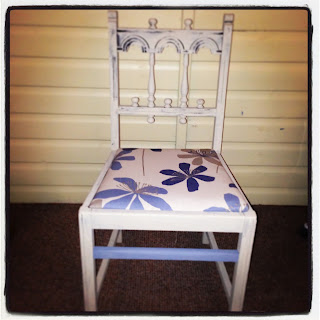 |
| Painted - no wax. |
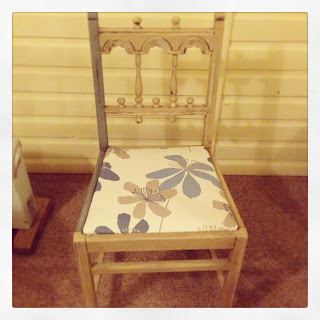 |
| Painted - dark wax |
Now you may have noticed a couple of extras - a touch of blue here and there and newly upholstered seats. Obviously I wasnt going to stick with the leatherette! I like a little design touch the blue brings.
So. Wax. remember I am embracing the Seepage - I did the unthinkable - I applied Dark Wax directly onto the paint. The single coat or roughly applied paint. Yes I did. Now you can too.
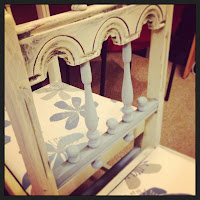 |
| Unwaxed but ready to go. |
 |
| Unwaxed Ercol Chair |
 |
| Dark Wax on Ercol Chair |
 |
| The Dark Waxed Version |
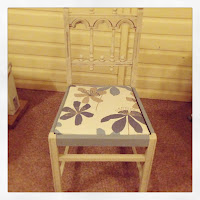 |
| Blue at the front |
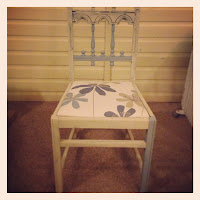 |
| Blue hints on Ercol |
 |
| Find my blue bits. |
Now I need to wax the full set and get them up for sale.
Until next time.
M x
2 comments:
Have you tried the superprimers? I use Blackfriars problem solving primer a lot. Despite being water based it kills all stains and provides great adhesion without sanding. Some people use clear Zinsser shellac as a sealer too. This won't alter the colour of your wood which is nice if you're distressing. Hope that helps!
Hi Emma Kate - Thanks so much for the tips. I have not heard of the Blackfriars although I do use Zinsser 3,2,1 when I want to avoid the stains and shellac if I have a piece that is a bit whiffy, (I had one set of drawers that stank like an ashtray with B.O. but a quick coat of shellac sorted it out). I hadn't though about the distressing and the sealer - great tip, thanks. M x
Post a Comment